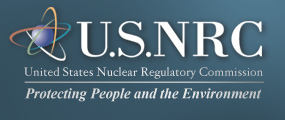UNITED STATES
NUCLEAR REGULATORY COMMISSION
OFFICE OF NUCLEAR REACTOR REGULATION
WASHINGTON, D.C. 20555
June 19, 1990
Information Notice No. 90-42: FAILURE OF ELECTRICAL POWER EQUIPMENT DUE
TO SOLAR MAGNETIC DISTURBANCES
Addressees:
All holders of operating licenses or construction permits for nuclear power
reactors.
Purpose:
This information notice is intended to alert addressees to possible failure
modes of electrical power equipment in nuclear power plants and the
connected transmission systems due to solar magnetic disturbances. The
events described herein may be precursors to station blackout or partial
loss of offsite power sequences. It is expected that recipients will review
the information for applicability to their facilities and consider actions,
as appropriate, to avoid similar problems. However, suggestions contained
in this information notice do not constitute NRC requirements; therefore, no
specific action or written response is required.
Description of Circumstances:
On March 13, 1989, an exceptionally strong geomagnetic storm caused major
damage to electrical power equipment in Canada, Scandinavia, and the United
States. The greatest damage occurred in Canada, where the Hydro-Quebec
extra high voltage (EHV) transmission system experienced seven static
compensator trips, causing system instability and tripping of lines carrying
power to Montreal from hydroelectric generating facilities at James Bay.
Automatic load-shedding was not able to offset the loss, and within a few
seconds, frequency and voltage excursions occurred throughout the rest of
the system resulting in total blackout of the Hydro-Quebec system.
In the United States, a voltage fluctuation of up to 4 percent was recorded
on the EHV systems in Pennsylvania, New Jersey, and Maryland. In the
Allegheny Power System, this storm caused 10 of the 24 transmission class
capacitor installations to trip and eight EHV autotransformers to heat.
Specific events occurred at the Three Mile Island Unit 1, Hope Creek Unit 1,
and Salem Unit 1 nuclear power plants. At Three Mile Island 1, the licensee
observed tripping of capacitor banks in the 500-kilovolt substation. At
Hope Creek 1, the licensee observed swings in reactive electrical power and
six operations of the main generator negative sequence alarm, indicating
9006130245
.
IN 90-42
June 19, 1990
Page 2 of 3
electrical faults or power imbalances that could damage equipment. At Salem
1, the licensee observed swings in reactive electrical power and, in a
subsequent inspection of the generator step-up transformer, the licensee
observed severe overheating, melted low-voltage service connections in
phases A and C, and insulation discoloration in phase B.
On September 19, 1989, at the Salem Unit 2 nuclear power plant, a second
solar storm damaged the generator step-up transformer.
Discussion:
Solar flares and other solar phenomena radiate waves of ions, electrons, and
protons called the solar wind. The solar wind interacts with the earth's
ionosphere and magnetic field in a complex manner to produce auroral
currents near the earth. The auroral currents induce an earth-surface
potential (ESP) that establishes geomagnetically induced currents (GICs) in
electrical power distribution systems through the neutral grounding points
of wye-connected transformers at the ends of high-voltage transmission
lines.
The GICs are quasi-direct currents, compared to the usual alternating
current frequency of 60 hertz. Measured values of GICs in transformer
neutral grounding points have exceeded 100 amperes. Such currents can
distort current transformer responses and undesirably trip protective
relays. Further, GIC can cause magnetic saturation of transformer cores.
Depending on the extent of saturation, these GICs may initiate excessive
reactive, eddy, and harmonic currents. Excessive reactive current can
overheat transformers and produce excessive voltage drops in a transmission
system. Core saturation with harmonic currents can cause localized heating
in transformer steel members, winding conductors, and leads. Excessive
harmonic currents in transmission lines can cause system voltage
distortions, which can overload capacitors in the transmission system and
trip their protective devices, causing further voltage degradations.
In general, solar magnetic disturbances follow an 11-year cycle. In the
present cycle, these disturbances exhibited minimum activity in September
1986 and are expected to peak in 1990-91 and in 1993-94. Some researchers
in the field of solar activity expect this present cycle to be the strongest
yet recorded. If these predictions are accurate, these peaks may produce
equipment damage, loss of electrical power, and problems with voltage
control in transmission systems connected to nuclear power plants.
Several organizations are actively studying the effects of solar magnetic
disturbances and ways to mitigate these effects. In particular, the
Institute of Electrical and Electronics Engineers (IEEE) has established a
working group that convened a group of experts to discuss these phenomena in
July 1989 ("Effects of Solar-Geomagnetic Disturbances on Power Systems,"
Special Panel Session Report, IEEE/PES Summer Meeting, July 12, 1989, Long
Beach, California). A copy of this report is available in the NRC Public
Document Room, 2120 L Street, N.W., Washington, DC.
.
IN 90-42
June 19, 1990
Page 3 of 3
This information notice requires no specific action or written response. If
you have any questions about the information in this notice, please call one
of the technical contacts listed below or the appropriate NRR project
manager.
Charles E. Rossi, Director
Division of Operational Events Assessment
Office of Nuclear Reactor Regulation
Technical Contacts: Vern Hodge, NRR
(301) 492-1861
Subinoy Mazumdar, AEOD
(301) 492-4308
Attachment: List of Recently Issued NRC Information Notices
.ENDEND
Page Last Reviewed/Updated Thursday, March 29, 2012


No comments:
Post a Comment